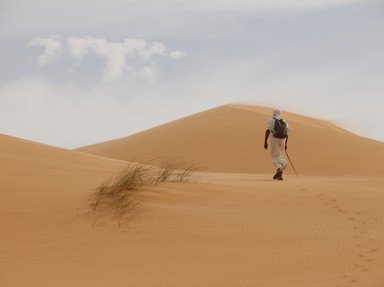Quiz Answer Key and Fun Facts
1. You sail into Mauritania's capital, Nouakchott. On which body of water is this located?
2. It might surprise you that Mauritania has a national rugby team. In the light of this fact, which colonial power, do you think, ruled the country prior to independence in 1960?
3. Most of Mauritania is desert. Therefore, in 2002, scientists were amazed to find the existence of an animal that is normally associated with water but which has learned to adapt and live without it for months at a time. Which of these animals was it?
4. At Chinguetti you will find something that is claimed to be the second oldest of its kind in continuous use anywhere in the world. What is it?
5. What would you do if you found yourself in Mauritania's "Eye of Africa"?
6. There's about 2500 miles between Scotland and Mauritania but the name Ben Amera might suggest a connection to you. Who or what is Ben Amera?
7. Do you want to buy a souvenir? If you do, you'll discover something unusual about your purchase. Which of these statements is true?
8. Why might a young Mauritanian girl be forced into a daily diet of 2kg of millet and 20 litres of camel's milk?
9. In 2007, Messaoud Ould Boulkheir was elected as president of Mauritania's National Assembly. What was unusual about his election?
10. Kediet ej Jill (915m), Mauritania's highest point, is formed from which rather unusual substance that might have you in a spin?
Source: Author
glendathecat
This quiz was reviewed by FunTrivia editor
Exit10 before going online.
Any errors found in FunTrivia content are routinely corrected through our feedback system.

